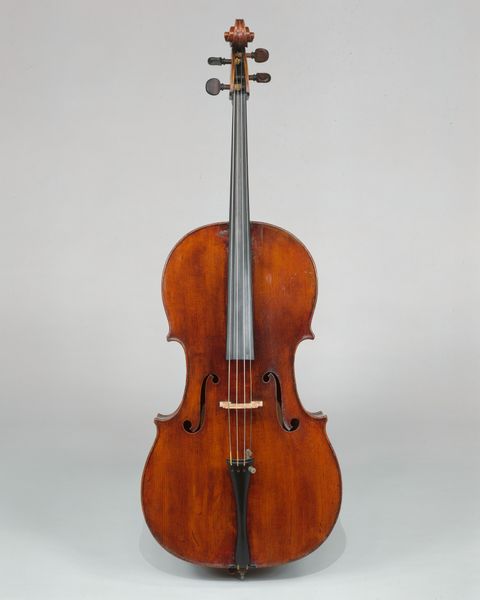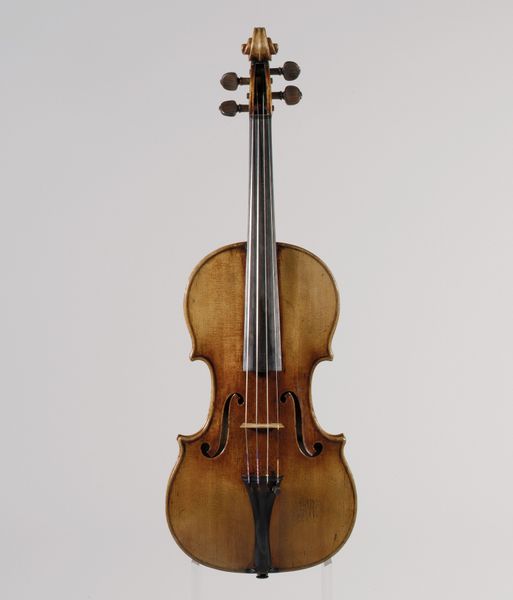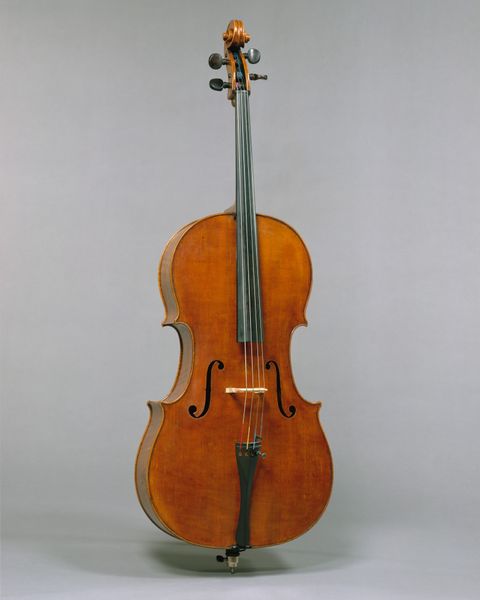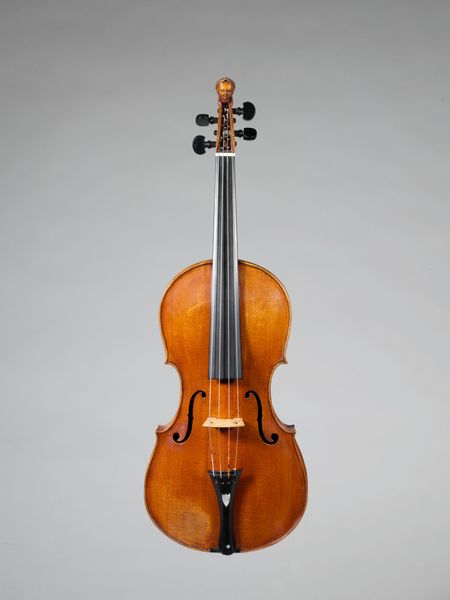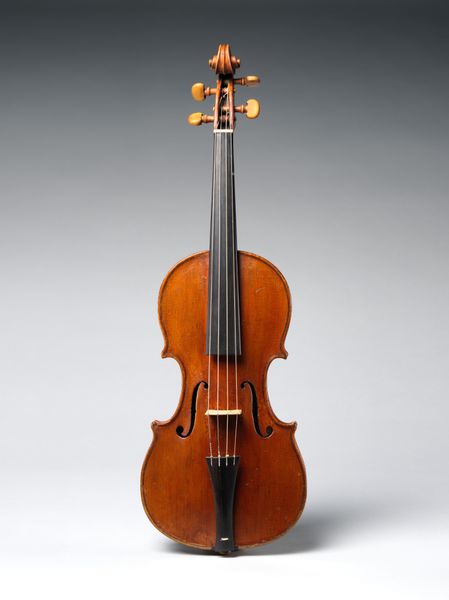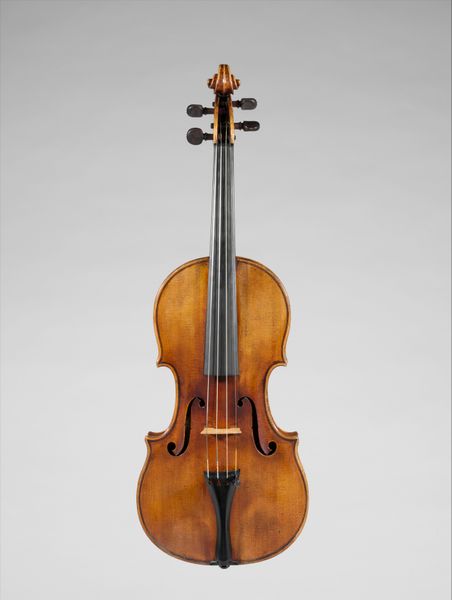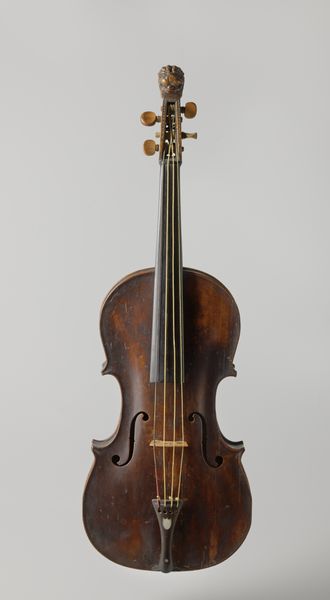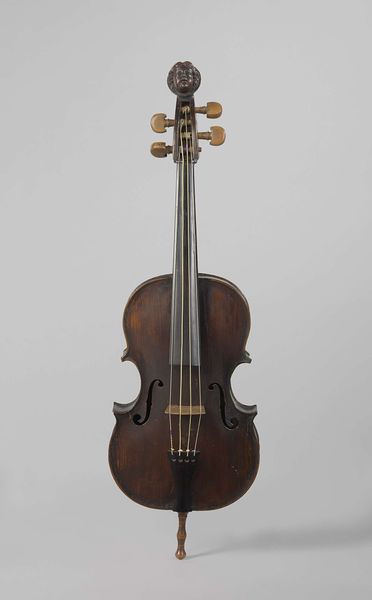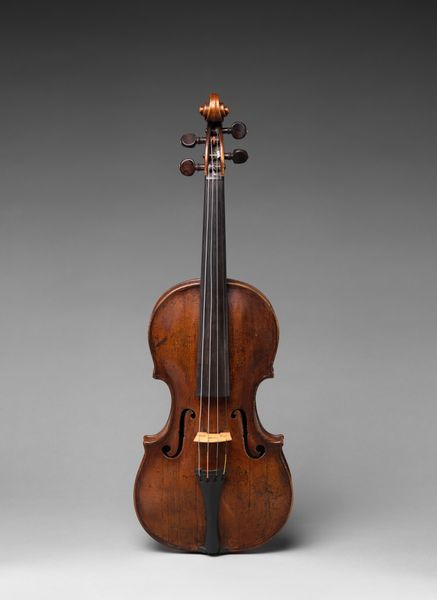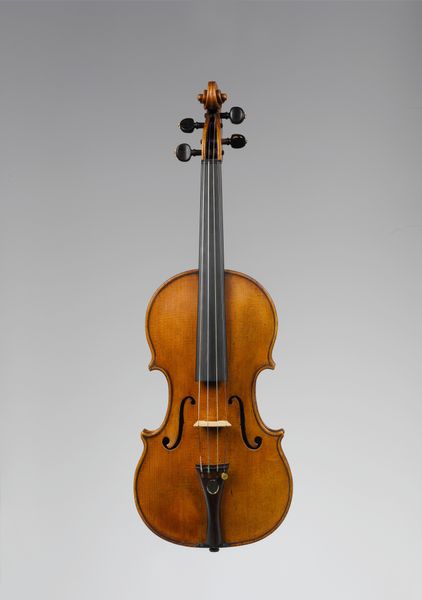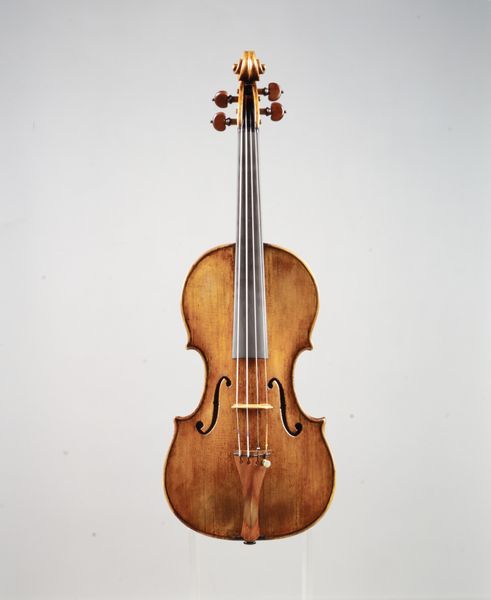
wood
#
wood
#
musical-instrument
Dimensions: Body L.: 83.3 cm (32-13/16 in.); Body W.: upper bouts 37.4 cm (14-11/16 in.); center bouts 26.7 cm: (10-1/2 in.); lower bouts: 48.2 cm (18-15/16 in.); Rib H.: top block 11.7 cm (4-5/8 in.); center bouts: 11.9 cm (4-11/16 in.; bottom block: 12.3 cm (4-13/16 in.); Vibrating string: L.: 75.2 cm (29-5/8 in.)
Copyright: Public Domain
Curator: Standing before us is William Darracott, Jr.'s "Yankee Bass Viol," crafted in 1861 and now residing here at The Metropolitan Museum of Art. Editor: Its polished wood glows; there is something so refined and statuesque in its construction. A poised monument to music itself. Curator: The American Civil War provides a compelling backdrop. The music created by an instrument like this, would provide soldiers, freed enslaved people, and abolitionist sympathizers—as well as others—opportunities for fellowship, expression, and mobilization. What could music offer to sustain people? Editor: You can feel the echo of symetrical lines. Look at the exquisite carving and the precision with which the various elements—the scroll, the soundholes, the bridge—are combined. The maker had to be so sure of the relationships. It gives an impression of perfect balance, almost architectural, an expressive kind of geometry. Curator: Indeed, beyond just formal elegance, we can think about this cello, particularly within its wartime context, as more than just a genteel diversion. Music becomes central to social movements, protest, or perhaps expressions of hope for an inclusive and more just nation. This cello existing as an embodiment of both musical joy and painful strife. Editor: And even if those historical elements are less familiar, the immediate visual pleasure holds appeal. We can also get lost in the sensuality of the varnish, its deep reflective gloss. It suggests layers of experience. I think the form has remarkable expressive qualities, an appeal quite distinct from any narrative. Curator: Well, there are many entry points! By understanding the context in which the Yankee Bass Viol was constructed and deployed, and by appreciating its construction, we might appreciate a broader and more intersectional interpretation of our past, where an instrument of great artistic ability serves the social needs and hopes of those who struggle. Editor: Agreed. Looking at this "Yankee Bass Viol" gives a chance to understand not only the cultural nuances of the era, but also to admire craftsmanship in the way form and function interact so perfectly, like a dancer—it really does leave a very lasting impression.
Comments
No comments
Be the first to comment and join the conversation on the ultimate creative platform.
